Back in June 2014 (issue 102) concept artist at Guerilla, Geoffrey Ernault, shared an insight into how he made it in the industry and how working on video game design has changed his approach to work…
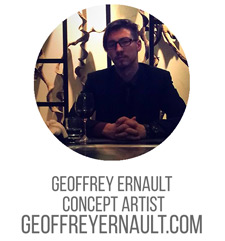
Geoffrey has been digital painting for over 6 years. He started freelance work about 3 years ago and is now working at Guerilla as a Concept Artist.
Geoffrey Ernault is a concept artist in the video game and film industry and began freelancing around three years ago. Having completed a diploma in video game and animation, Geoffrey starting working for clients such as Natural Motion and MPC. With a recent move from Paris, France to Cambridge, UK to work at Guerilla (formally SCEE) as a concept artist, Geoffrey finds himself focusing mainly on environments and props.
Geoffrey uses his experiences of travelling when he was younger to fuel his work, seeking inspiration from the places he visited, and turning creepy chaotic ideas into something that’s visually pleasing. With his currently projects at Guerilla under wraps, Geoffrey shares his inspirations and what he’s bringing to the table as a mentor at this year’s Trojan Horse was a Unicorn!
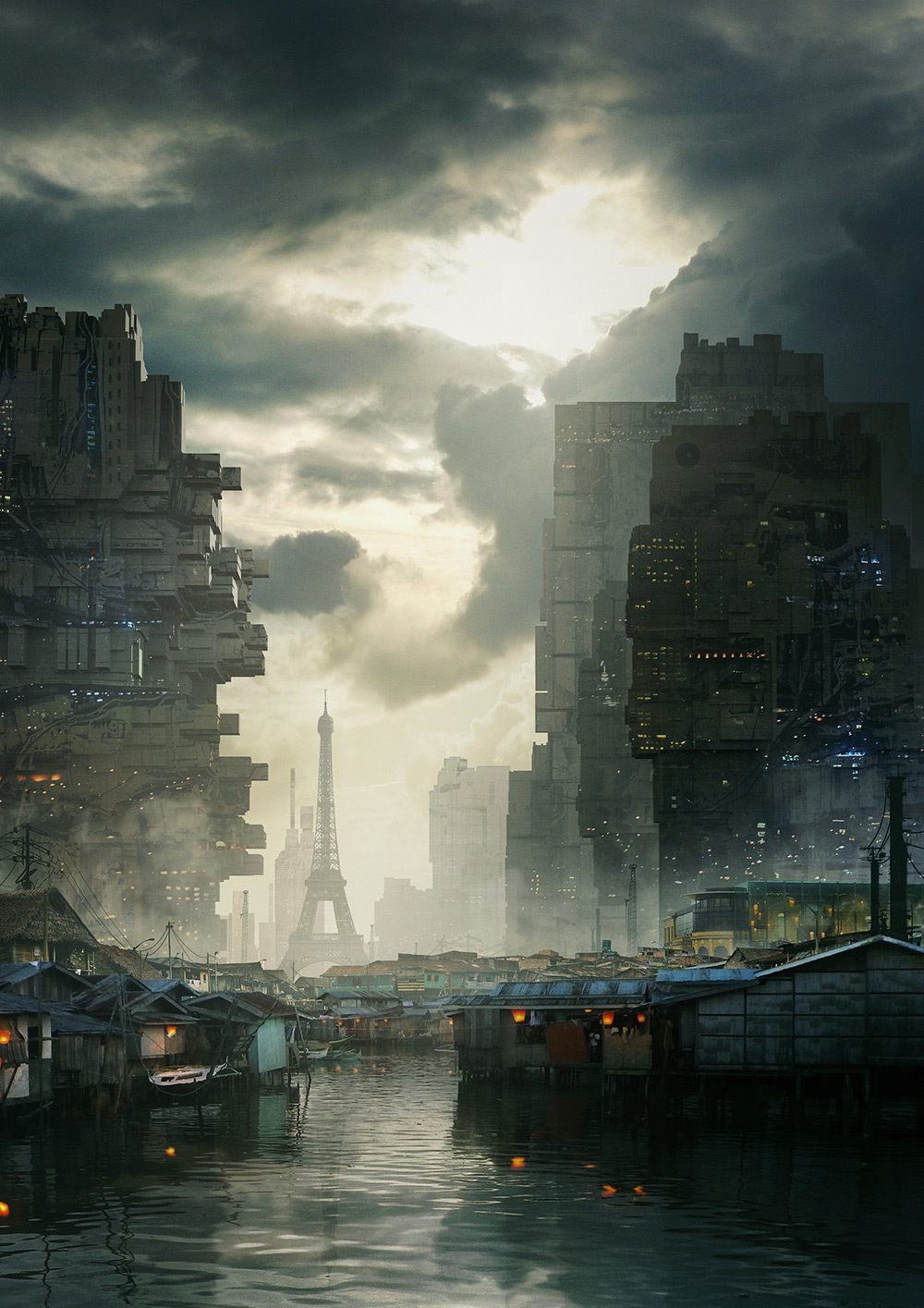
‘Dust In Neo Trocadero’ was one of Geoffrey’s first forays into using 3D software with Photoshop
© Geoffrey Ernault
Hi Geoffrey, thanks for chatting with us today! Could you tell us a bit about how you learnt to paint digitally, your journey into the industry and how you have got where you are today?
Hey! Thanks for the opportunity. I used to draw a lot when I was a kid and one day I received a tablet for my birthday, since I wanted to get into colorizing. I ended up joining art communities and discovered digital painting. At some point, I was painting everyday to better my skill level. I eventually decided to go to art school, which taught me that if I wanted to get anywhere I had to continue pushing myself in my own free time.
While still in school I started taking freelance gigs, nothing big at first, and then I gradually started growing more and more and with that so did my client base.
The reason that I am where I am is because I never stopped learning, I am always trying new methods and pushing myself both at home and work.
What was it about the digital tools that made you want to pursue a career in the industry?
Digital tools allow you to make mistakes – it’s not as frustrating as pencil in my opinion. I can just do a new layer and paint something on top for 30 minutes, and if it doesn’t work I’ll just delete the layer and try something else. It basically gives you more control, and allows you to get stuff done quicker I think, which in the end allows you to explore more and try out stuff.
You can also easily mix a ton of different mediums, like 3D, or even photography.
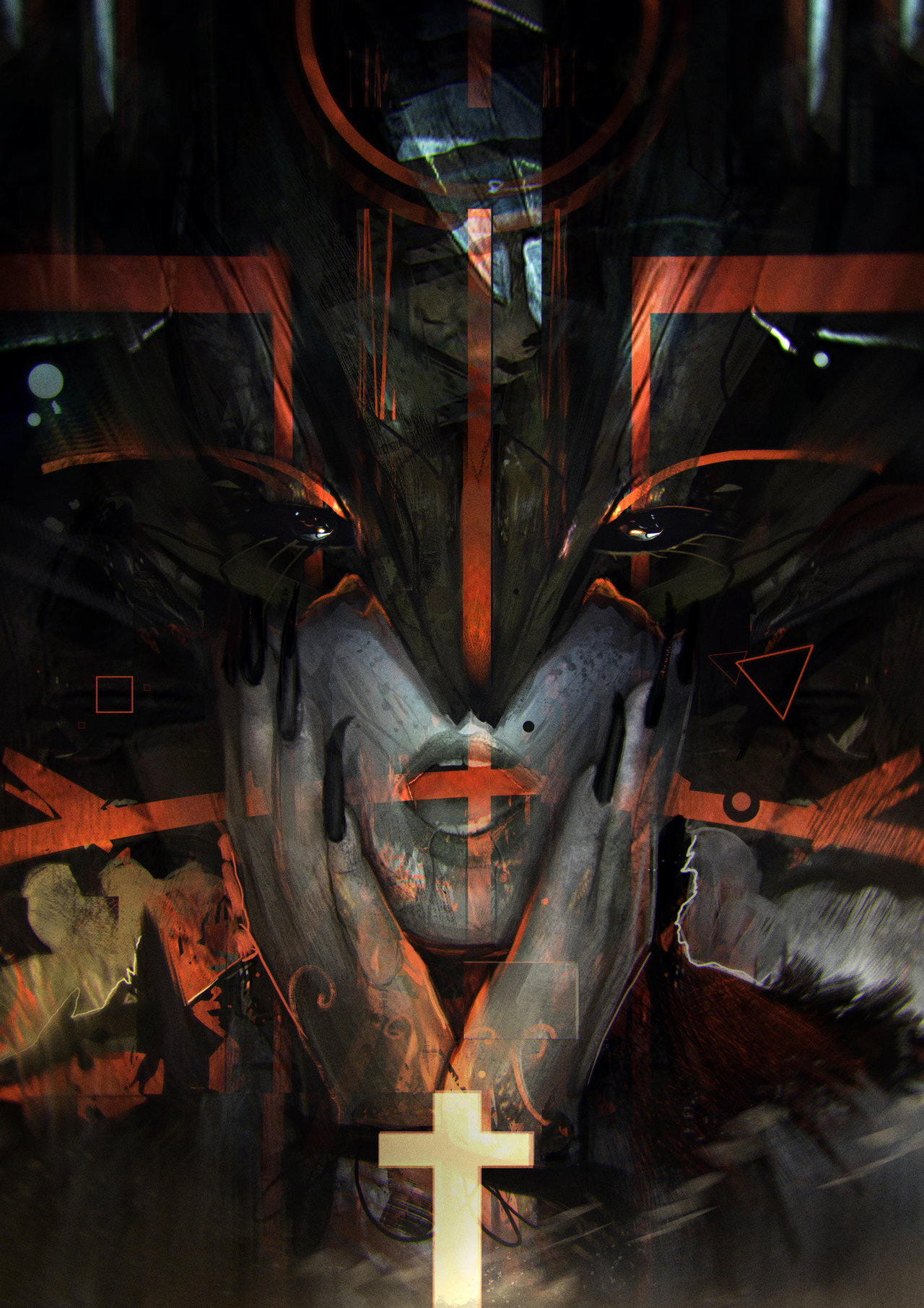
Aenema was an abstract experiment inspired by Tool’s ‘Aenema’
© Geoffrey Ernault
Could you tell us about your creative process and the software that you use?
Usually, I start off with an idea of what I want and then I sketch it for a few days on sticky notes or whatever just to explore different ways I can execute it. Once I have a decent idea of what I can do down, I start blocking it out in Photoshop or through 3D programs. I always use references. Then I’ll end up doing color and light tests to make sure it works before I truly commit to the image and start the final rendering process.
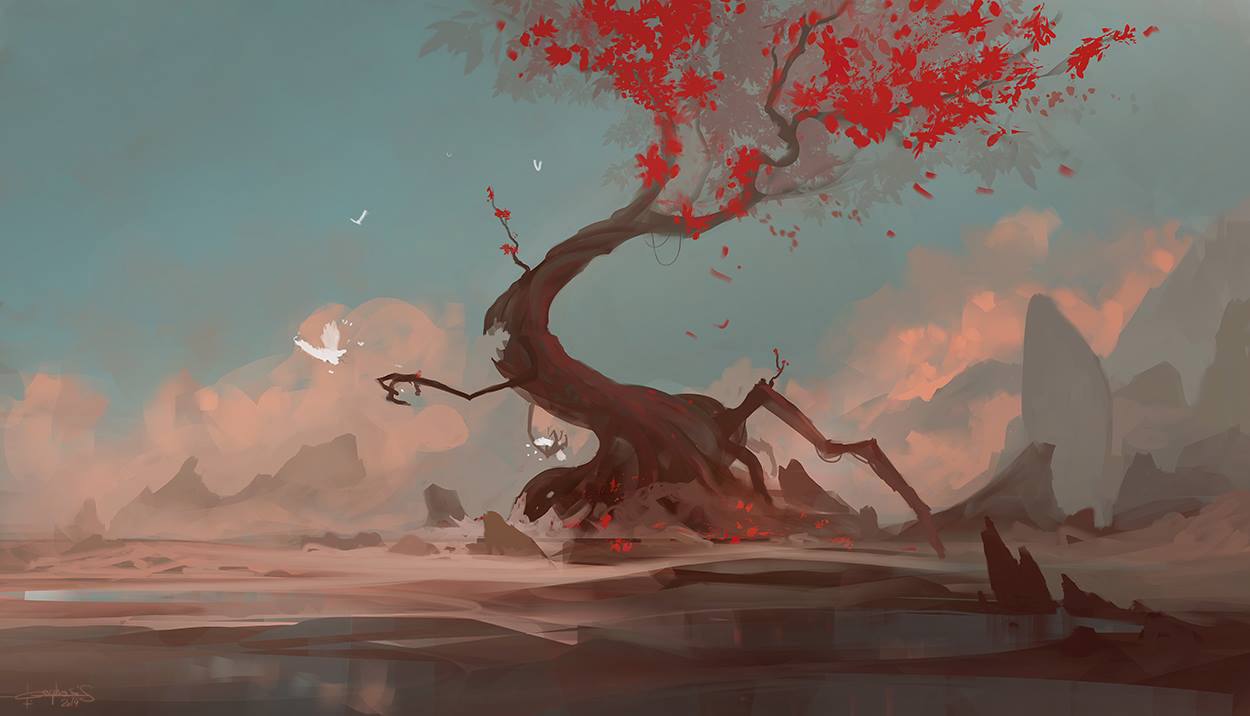
‘Grumpy Red Tree’ was made as a demo for students over at New 3dge
© Geoffrey Ernault
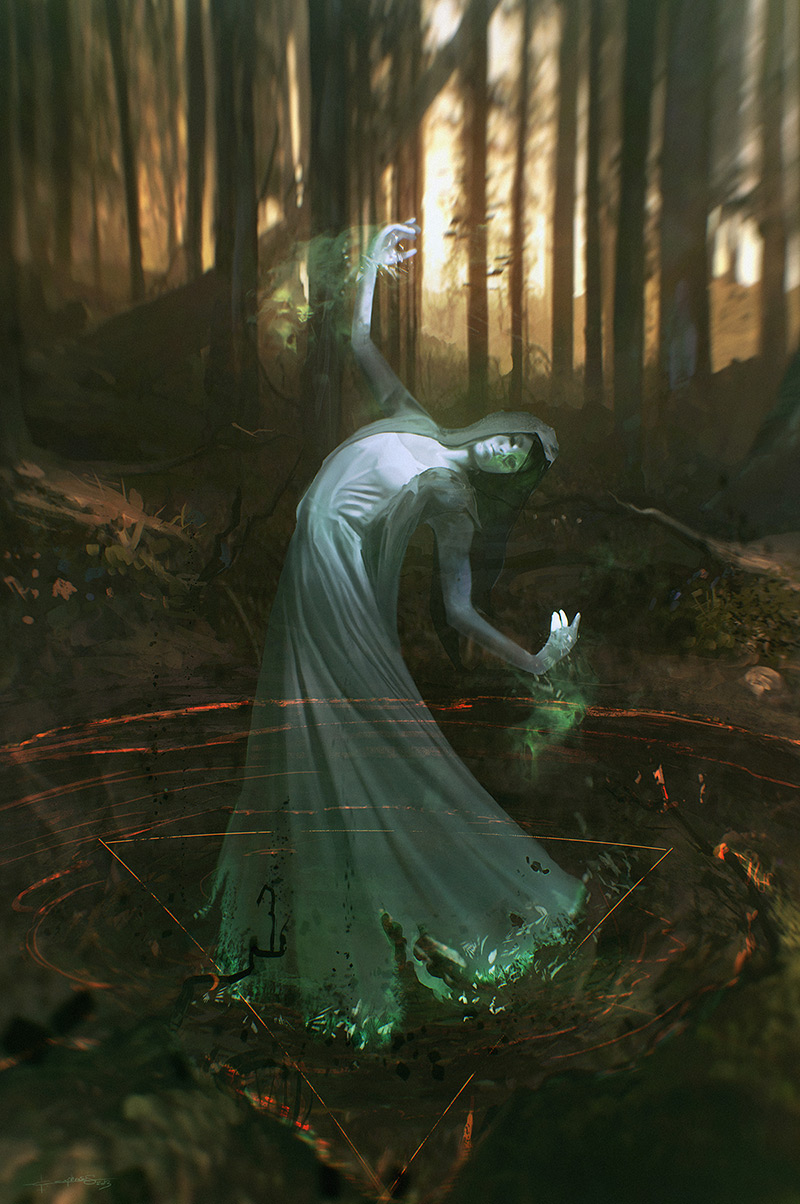
Geoffrey created ‘Ghastly Dance’ as a character experiment with the intent of creating something eerie
© Geoffrey Ernault
Has working on video game design changed your approach to your own work? What have you learned during paid work that you can apply to personal work?
I am always learning different things about different projects – you have to be fluid in your methods, one process developed for a specific work or image might bring you more tools later on for another image. Also, you have to be very open to making changes if something doesn’t work out. Don’t marry your work.
I’ve also learned a lot about making things functional, and doing actual design. Thinking more about ‘background‘ stuff. And well obviously how to work for a team and create images that they can read and then created in 3D.
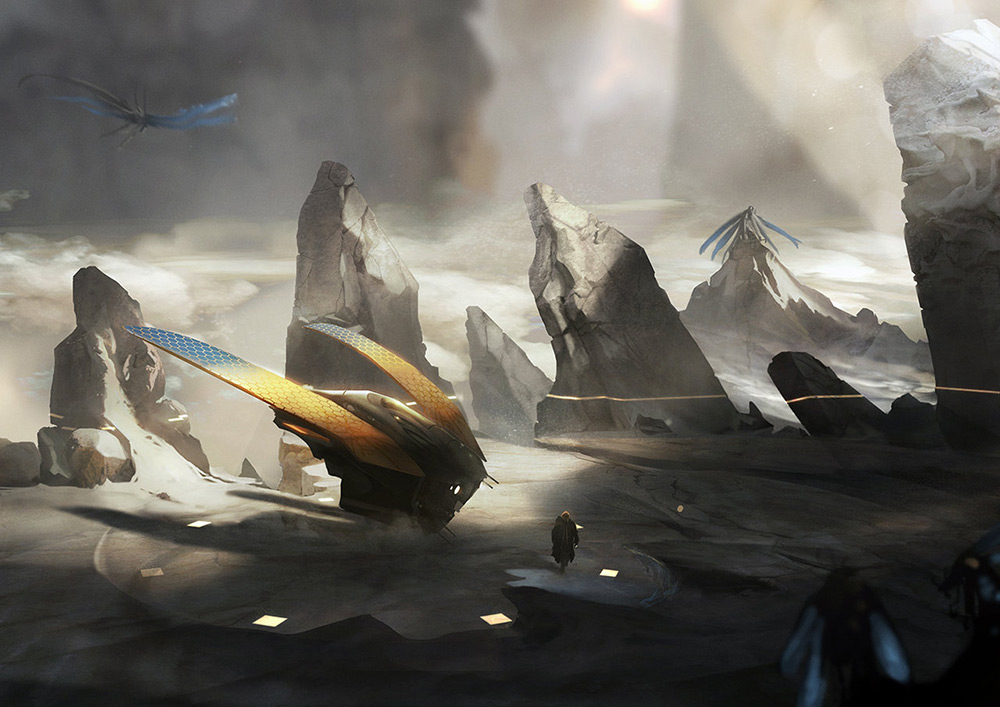
‘SVship’ was created as a demo at New 3dge, to demonstrating lighting techniques
© Geoffrey Ernault
What has been your favorite project to work on and why?
My favorite project so far is the one I am currently on at Guerilla, I really enjoy the work environment and my creative freedom. Its great being in a team that plays a nice role in today’s industry. People here are open to ideas and make sure everything is polished.
I’m also not a huge fan of the industry in France, so discovering Cambridge and this studio is really a breath of fresh air.
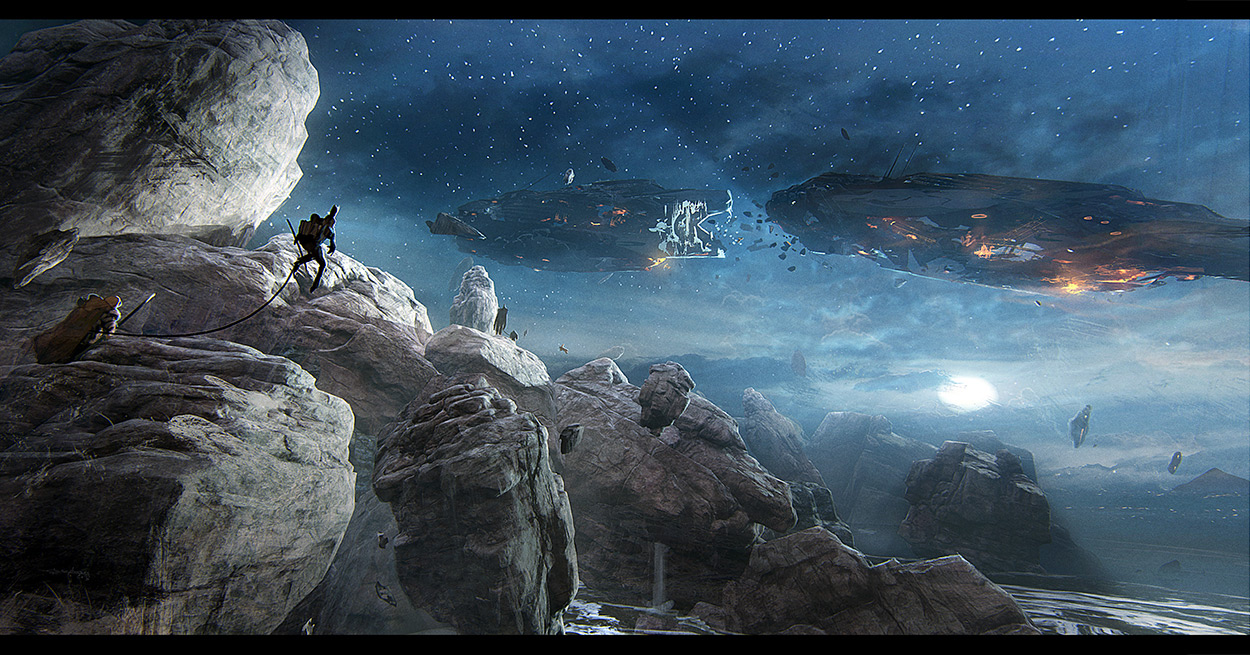
‘Torch From The Sky’ was created as an experiment in Unreal Engine workflows
© Geoffrey Ernault
You have been announced as a mentor at this year’s THU (congratulations!), what can people expect to see from you and what/who are you most looking forward to seeing?
(Thank you so much!) I’m really excited that they are having me come back and be a mentor! I’ll be sharing my own tips, and experiences as to how I got to where I am now, as well as probably doing demos and giving attendees feedback on their own work.
I am most looking forward to Jeremy Mann and Syd Mead, I have always loved Jeremy’s style and I am very excited to meet him, the same goes for Syd, he’s a pioneer in his domain and is that someone who I have a great amount of respect for. I am also looking forward to seeing old friends from last year and all the new speakers that I can learn from!
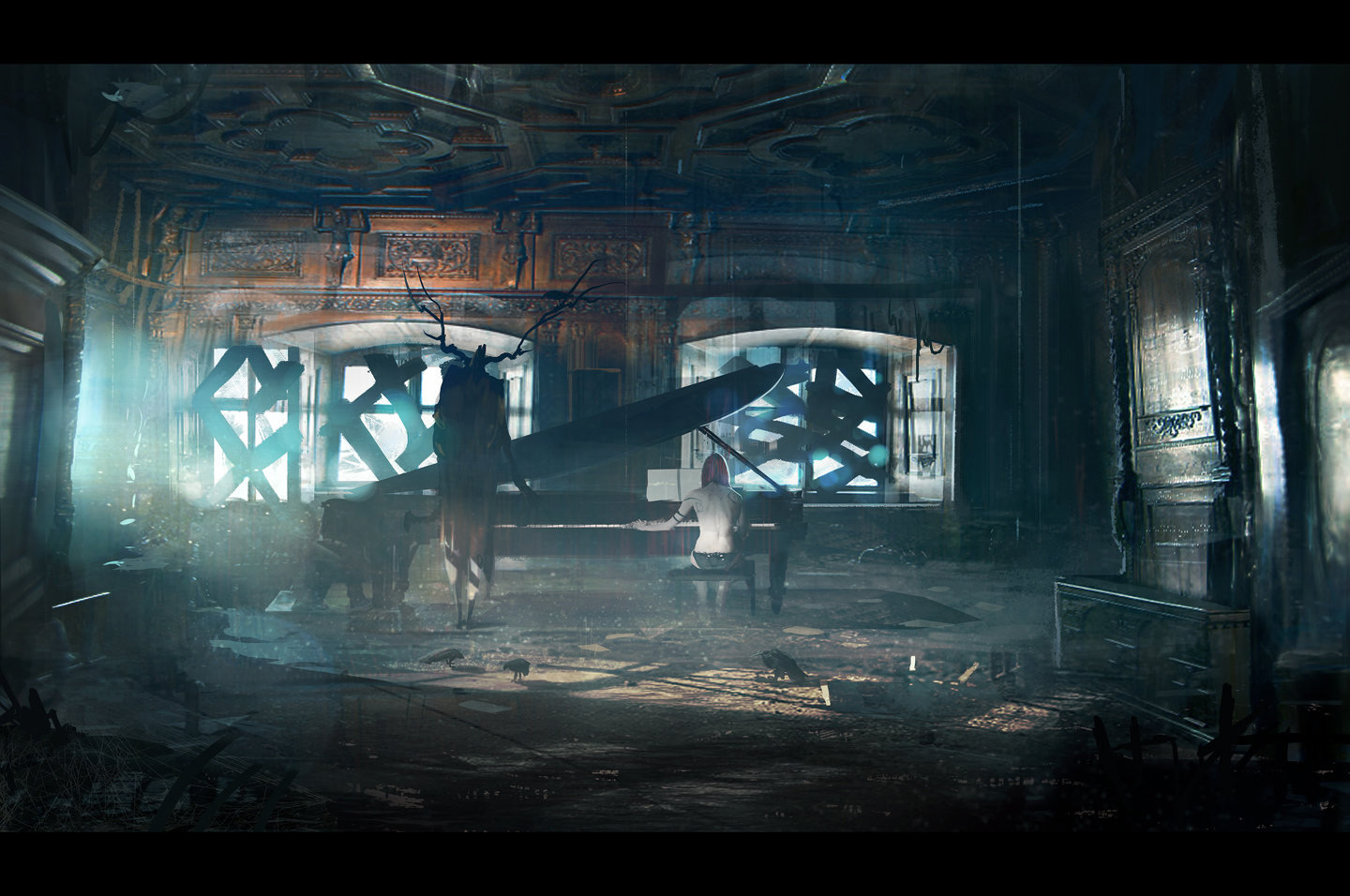
‘The piano lesson’ was inspired by psychological thriller, ‘Stoker’
© Geoffrey Ernault
Can you tell us about any of the projects you are currently working on?
I sadly cannot talk about the current project I am working on in-house, however I really enjoy doing daily speed paints – they allow me to explore new themes and not really think too much about detail or be stuck focusing on little details. If I really like how one is coming out, I’ll end up spending some extra time refining it. I’ve also been working on new workflows recently, so I believe you’ll see more detailed/ different images from me soon (hopefully!). I’ve been playing around with 3D a bit more than before too.
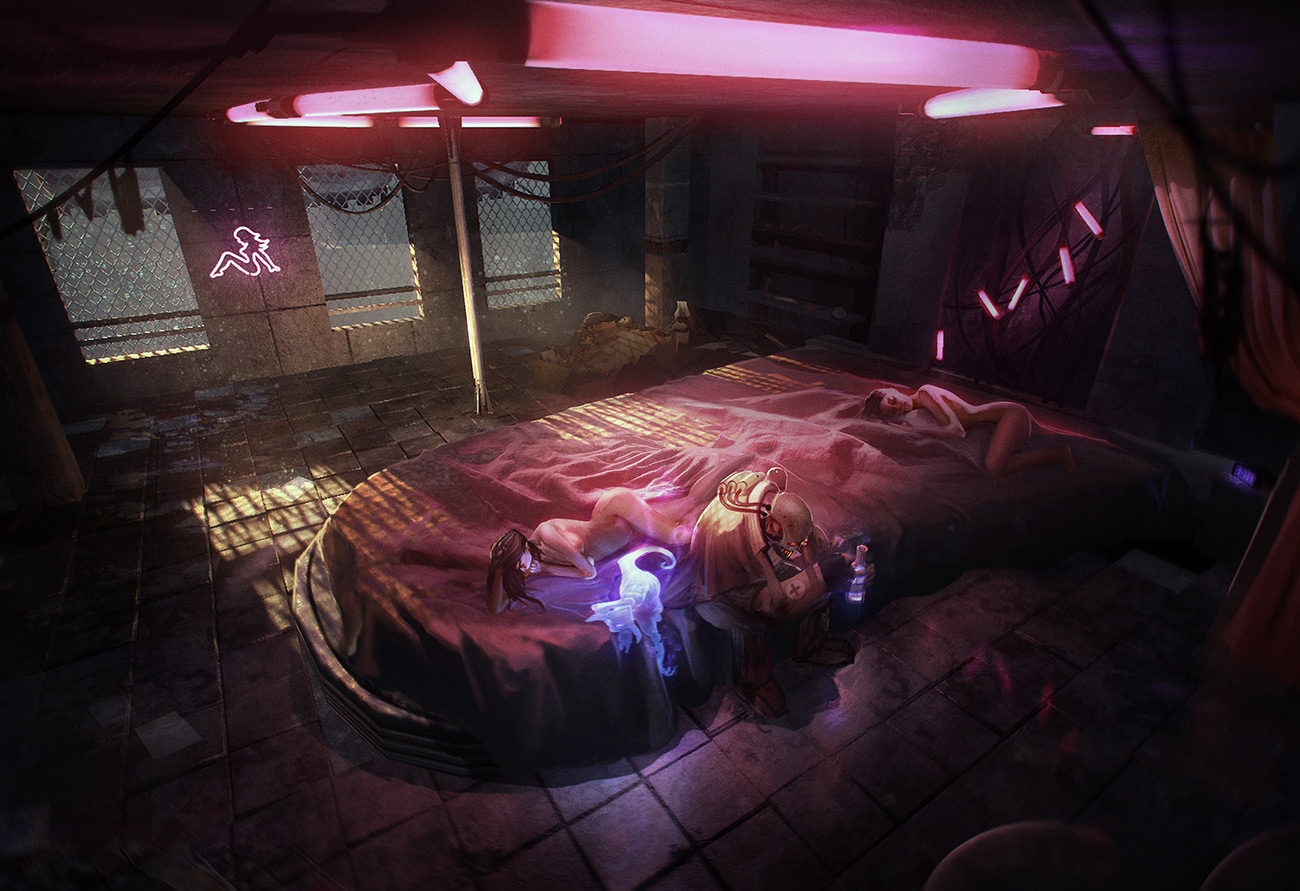
Geoffrey created ‘Thousand Suns’ as a personal project – it depicts a brothel called ‘The VixXxen’
© Geoffrey Ernault
How do you keep your portfolio up-to-date? Any tips?
I keep my portfolio up to date by constantly working in my personal time. If you work in the industry you usually cannot release your work until the project itself is out, which can take a few years, so I make sure I am always producing and enjoying the process. It’s also great to share that with the community and get their feedback.
Finally, I try to constantly focus on my weak areas. If I see I’m stuck with something in an image, I usually study that aspect for a few days.
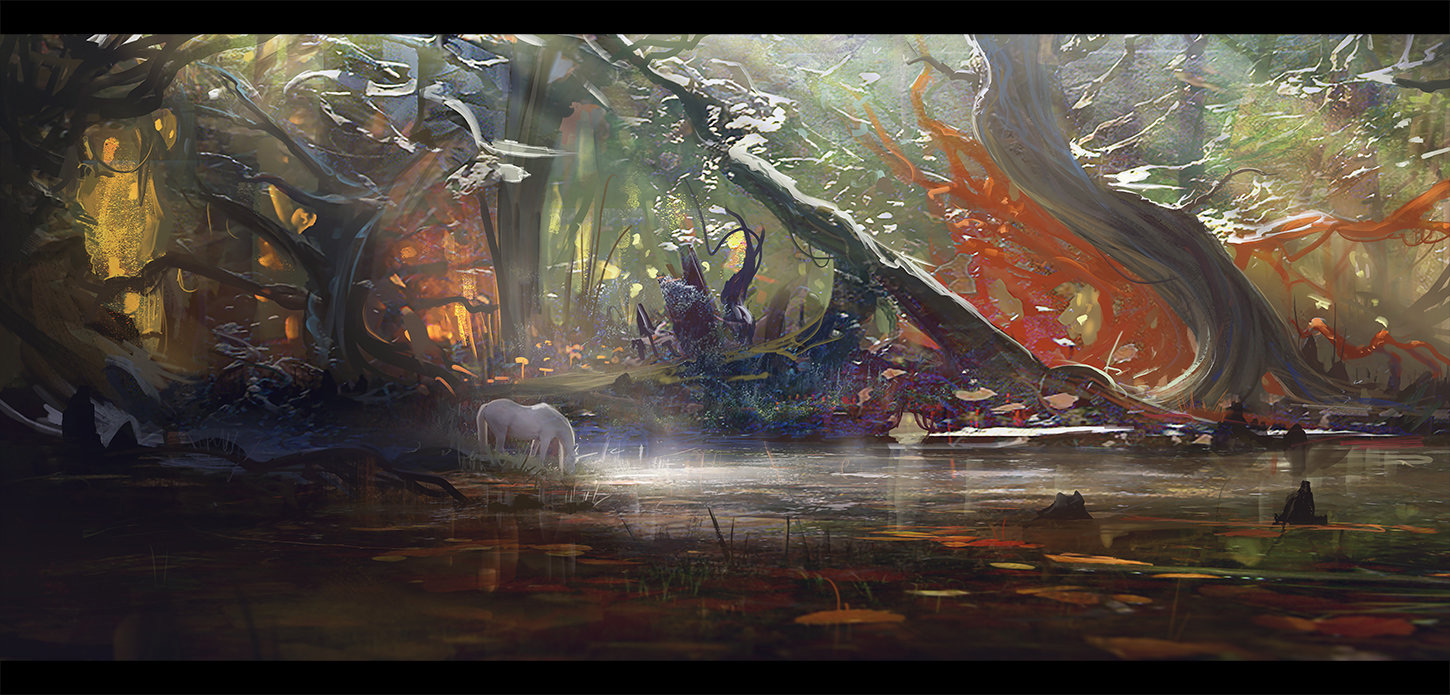
Geoffrey created ‘Whimsical Forest’ as color practice. He notes that he felt like painting a unicorn because they are underrated © Geoffrey Ernault
Do you have any advice for artists looking to break into the industry?
Keep pushing yourself and never give up – if you want to work at a certain studio, project, or style, always keep working towards it every single day. There are always going to be people who tell you that you cannot do something – ignore them, they are not you. You get as much as you put into it, remember that professionals are working 8+ hours a day, you have to make sure you can rival them and if you want it enough, you will get there easily.

Geoffrey depicts a sci-fi scene where people harvest fuel from derelict crashed spaceships © Geoffrey Ernault
Who are your favorite artists, traditional or digital, and can you explain why?
I really like Mr Jack, (Luke Mancini), he’s primarily a digital artist but he’s still amazing at traditional media. I love the way he paints, how he uses colors and light to tell a story in his images.
I also like Sparth (Nicolas Bouvier) for how he plays with shapes and design; Thom Tenery and how he does general mood and lighting in his work; Andree Wallin for his realism and lightings; Jeremy Mann for the way he works with textures and still makes it readable; and Kim Jung Gi for the way he is able to sketch everything so perfectly from his imagination and his use of perspective and detail.
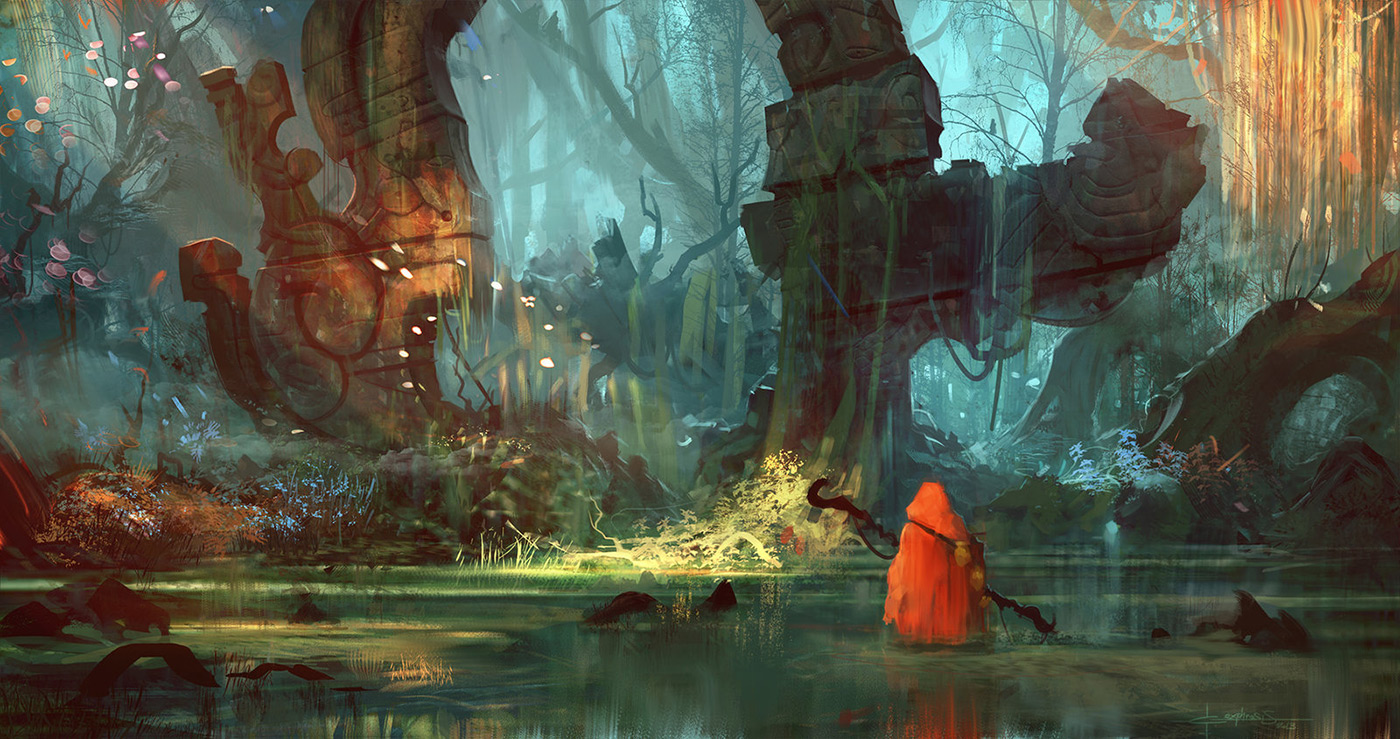
‘Relic Theory’ was another image Geoffrey created as a demo for New 3dge – this time exploring ideas of color theory and composition
© Geoffrey Ernault
Finally, what can we expect to see from you in the future?
I have a lot of art that I am excited about posting from different projects. I am also working on new pieces where I am pushing my current work to be more detailed, and yet also trying to be more graphical.
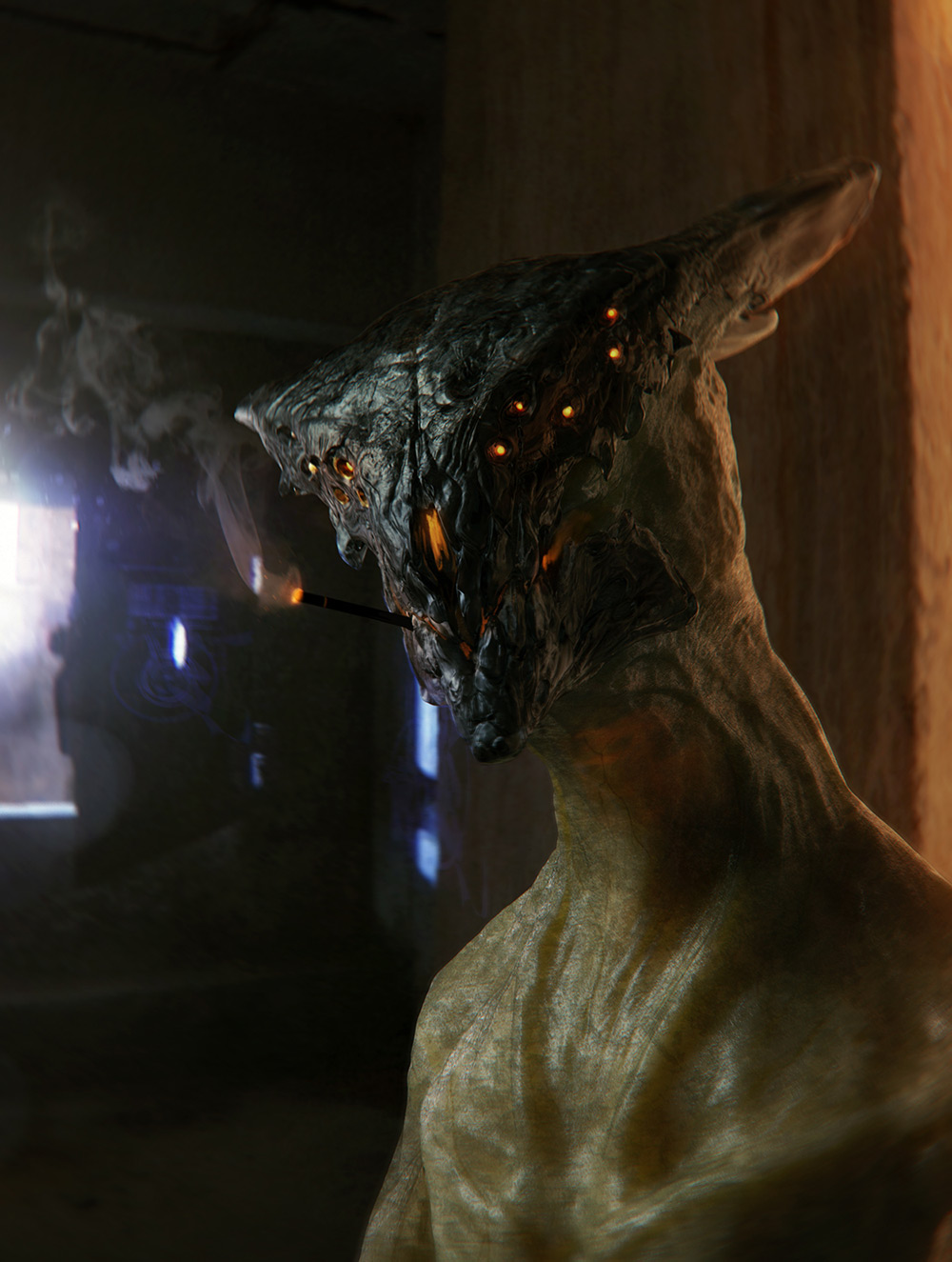
Geoffrey’s image of the Azilis – a pretty arrogant alien creature, addicted to vanilla cigarettes, sex and Greek food.
© Geoffrey Ernault
Top Tip 01: Working with dual screens
One of the things I like to do while working is have another window of my current piece opened up on my secondary monitor at the screen’s size. I do this by going to Window > Arrange > New Window for *file name*. This duplicates the window and allows me to work and look at what’s going to be viewed at the full screen size so everything is readable and I don’t over render the small things that will get lost in the big picture.
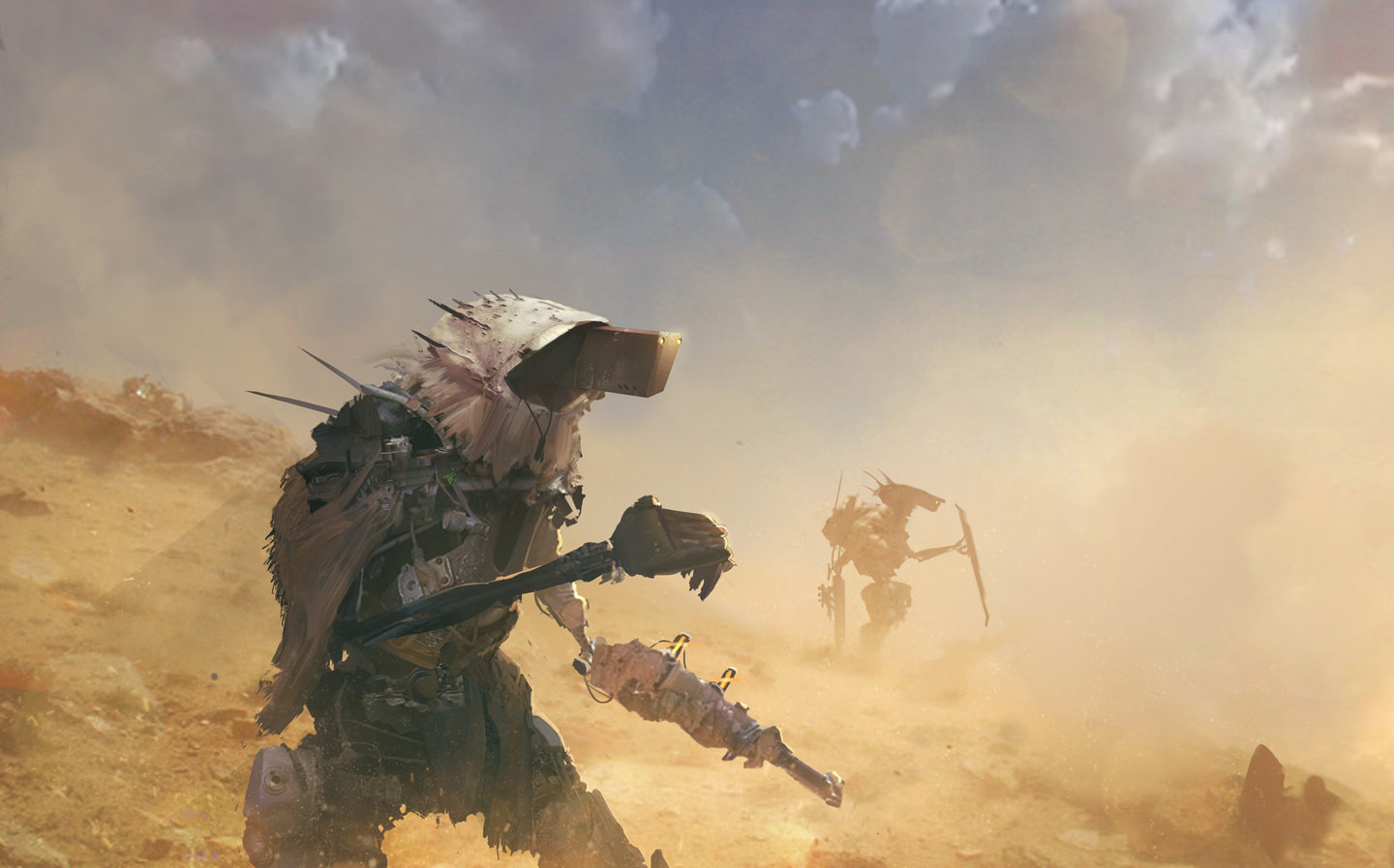
‘Node World’ was the result of exploring ideas of a world inhabited by self-built robots
© Geoffrey Ernault
Top Tip 02: Force yourself out of your comfort zone
Always try new things and new methods and don’t limit yourself to painting tools alone. Try and learn new things to better your pipeline, like blocking out scenes in 3D or sculpting out ideas in ZBrush that you can use as a base for your final pieces.
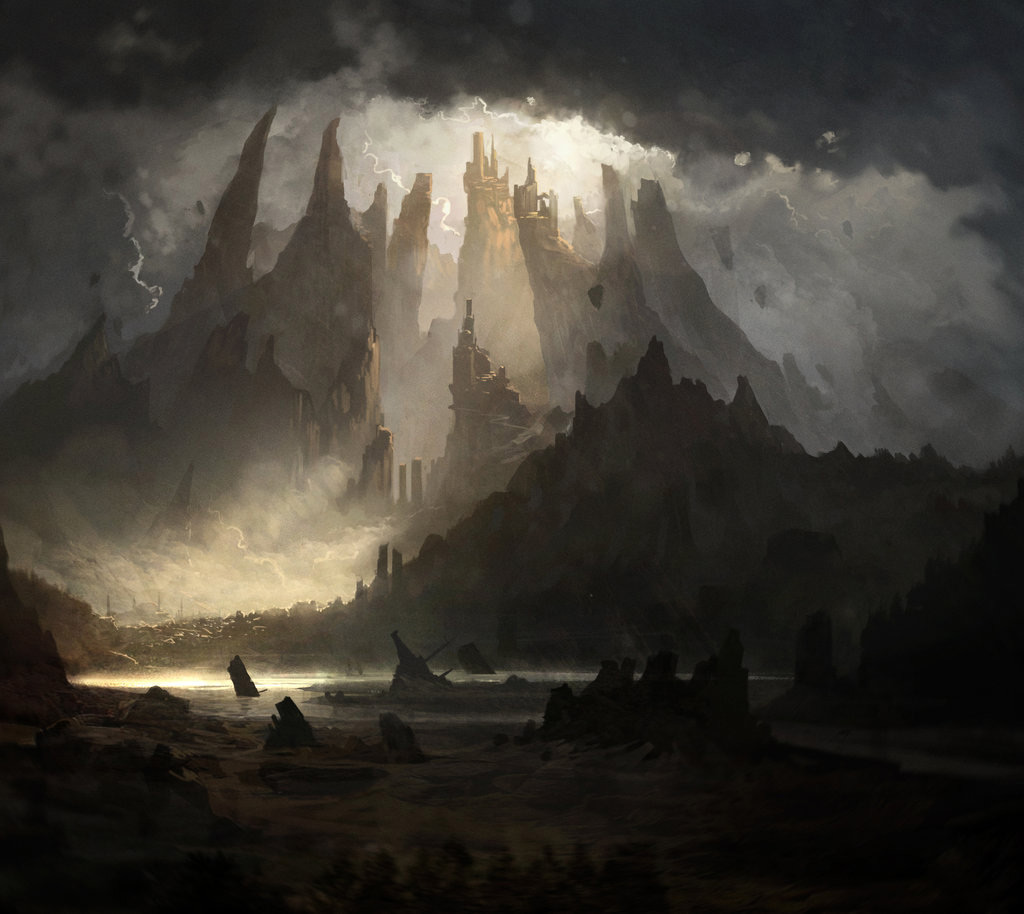
‘Ishtar’ was commissioned as an album cover art for Ishtar, a French metal band
Top Tip 03: Think things through
Whenever you are constructing things, try and really think about what you are making. If you’re creating a creature, think about where it comes from, how its anatomy would work if it were real, and how its coloring would help it in its environment. What does it eat? Is it a carnivore or herbivore? Is it aggressive and fights a lot? Things like that would impact its design.
Thanks for taking the time to chat with 2dartist!
